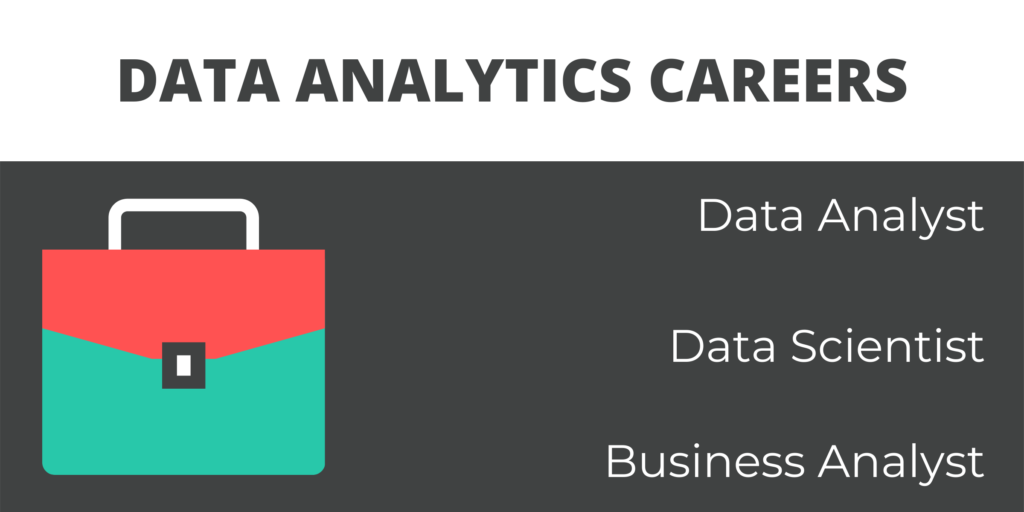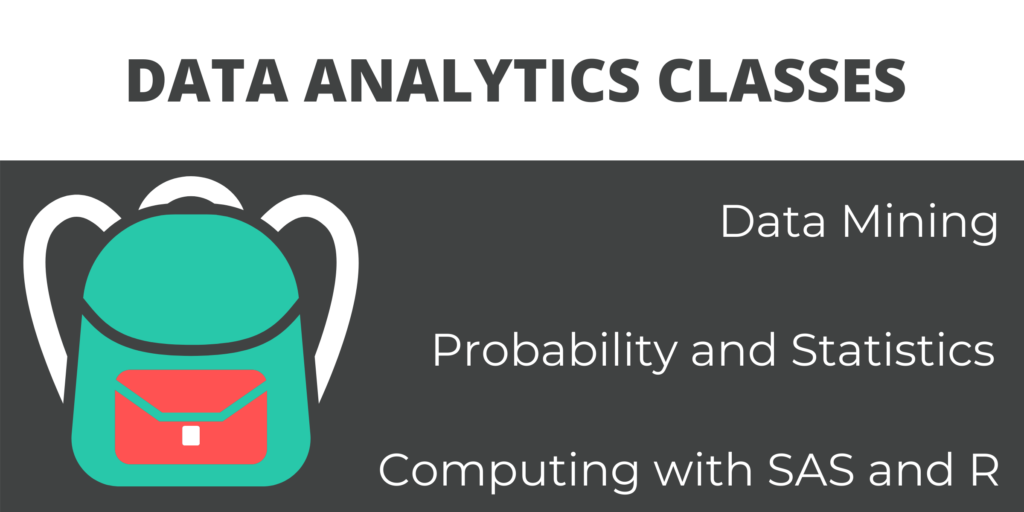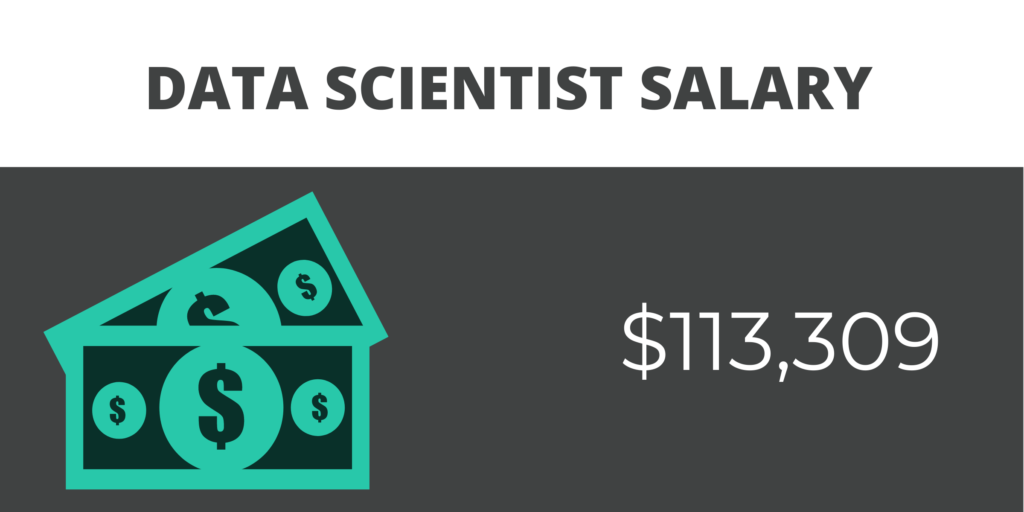Data analysis is a burgeoning sector of the data science industry demonstrating explosive growth in markets around the world. Skilled data scientists are among the most demanded and most gainfully compensated professionals in the United States job market today.
But the evolution of the data analytics industry means that expectations are high for data scientists. In order to build success in one’s career, aspiring data scientists should work to establish a high value specialty through a prestigious degree program–one of the safest methods for guaranteeing professional advancement.
How do I evaluate data analytics degree programs?

The best method for evaluating a data analytics analytics program will depend on the student’s particular career goals and professional aspirations. Those who have their eyes set on managerial positions will need to begin building leadership experience as early as possible. Similarly, many of the most technical areas of the field are gated behind extensive specialization or certification requirements.
To properly evaluate degree program options, students will need to have a firm grasp of their career goals. And to have a firm grasp of one’s career goals, one needs to know what options are available to them and which programs will carve out the clearest path to success.
Data analytics degree specializations and alternative tracks

Some students may wish to leverage a data analytics degree to pursue a master’s education in business, information technology, or computer science. Likewise, many students will want to specialize their data analytics degree in order to confer a professional specialty, such as in business management, data visualization, or cybersecurity.
So with that in mind, we have compiled a list of resources to help in these endeavors–rankings of the best programs, degree specialization options, and career outcomes. But for a more in-depth look at the data analytics degree and what you can do with it, be sure to read on to the guide below.
Data analytics, Business Intelligence, and Data Analytics
- What Can I Do with a data analytics Degree?
- The 10 Best Online Masters in Data Analytics
- What Can I Do with a Business Analytics Bachelor’s Degree?
- The 10 Best Online Masters in Data Analytics
- 10 Fastest Online Business Analytics Bachelor’s for 2020
- 10 Most Affordable Business Analytics Bachelor’s for 2020
- 15 Best Online Business Analytics Bachelor’s for 2020
- 25 Best Business Analytics Bachelor’s Degrees for 2020
- What Can I Do with a Business Intelligence Master’s Degree?
- 10 Fastest Online Business Intelligence Master’s Degrees for 2020
- 10 Most Affordable Business Intelligence Master’s Degrees for 2020
- 15 Best Online Business Intelligence Master’s Degrees for 2020
- 25 Best Business Intelligence Master’s Programs for 2020
MBAs, Cybersecurity, and Cybersecurity MBAs
- 25 Best Cyber and Information Security MBA Degrees for 2021
- What Can I Do With A Management Information Systems Degree?
- 10 Fastest Online Cyber and Information Security MBA Degrees for 2021
- 15 Best Online Cyber and Information Security MBA Degrees for 2021
- 10 Most Affordable Cyber and Information Security MBA Degrees for 2021
- 15 Best Online Cyber and Information Security MBA Degrees for 2021
- 25 Best Cyber and Information Security MBA Degrees for 2021
IT & Actuarial Science
- What can I Do with an IT Management Degree?
- What Can I Do with an Actuarial Science Bachelor’s Degree?
- What Can I Do with an Actuarial Science Master’s Degree?
- What Can I Do with a Mathematics and Statistics Master’s Degree?
- The 10 Best Online IT MBA Degree Programs
What is a Career in data analytics?
“[I]f our digital universe or total data content were represented by tablets, then by 2020 they would stretch all the way to the moon over six times. That’s equal to 44 zettabytes of data, or 44 trillion gigabytes.” – IDC
A career in data analytics is a career in information technology and data science where one specializes in the gathering, cultivating, and analysis of data sets. Data scientists work in a broad range of industries–basically wherever there is an influx of high value data, there is a market for data scientists.

Data analytics as an industry has received so much positive attention and cultural awareness because of its fundamental offerings. Unlike other areas business intelligence, data analytics offers across-the-board gains in efficiency and productivity by reducing waste and inefficiency.
As companies are empowered to make better use of data which in-turn drives increased productivity and value in its operations, savings are passed down to the consumer. Because a company’s operation-cost is lessened so too is the cost of its products, meaning the consumer saves money, too.
This kind of win-win is a tremendously rare upside rarely seen in economics, and it is why data analytics as a profession is receiving such widespread support in both corporate culture and consumer interests. If you are an efficiency-productivity-junky who loves numbers, data, and technology–then a career in data analytics might just be the ideal option for you.
Common Jobs in data analytics

As mentioned in the introduction, data analytics is a highly flexible and amorphous profession that is constantly evolving to meet the demands of various industries as well as evolving at new technology and IT strategies. That being said, many of the same data analytics positions can be found throughout vastly different industries. Some of the most common jobs for data scientists are as follows:
Applications Architect
- Applications architects help design and analyze all major aspects of various software applications.
- PayScale reports that the annual low-end salary for applications architects is roughly $83,000, while the median annual salary sits at about $113,400 (as of July 2020).
Business Intelligence Developer
- Business intelligence (BI) developers create business operations, productivity, and strategy reports and create tools to execute on these strategies. They also employ data-mining techniques to glean high value directives.
- PayScale reports that the annual low-end salary for Business intelligence (BI) developers is roughly $56,000, while the median annual salary sits at about $79,900 (as of July 2020).
Data Engineer
- Data engineers develop the front-end and back-end systems that allow data scientists to collect and cultivate data. These professionals typically hold responsibilities similar to software engineers, however they demonstrate a more specialized focus on data systems development.
- PayScale reports that the annual low-end salary for data engineers is roughly $65,000, while the median annual salary sits at about $92,200 (as of July 2020).
Enterprise Architect
- Enterprise architects work to improve an organization’s standing by implementing key technology and high-tech strategy. These professionals often oversee an organization’s approach to data analytics and information technology, and as such approach these considerations within the context of business management.
- PayScale reports that the annual low-end salary for enterprise architects is roughly $93,000, while the median annual salary sits at about $130,200 (as of July 2020).
Machine Learning Engineer
- Machine learning engineers design, develop, and implement self-learning software to fulfill an organization’s objectives. These engineers often develop machine learning software that automates the data-gathering and cultivating process, so that companies can streamline the process.
- PayScale reports that the annual low-end salary for Machine learning engineers is roughly $75,000, while the median annual salary sits at about $111,900 (as of July 2020).
A major takeaway here is that enterprise architects offer far-and-above the best compensation potential. Even low-end salaries for this position rival high-end compensation in adjacent positions. A key factor in the lucrativity of this role is its high-position in the business hierarchy–these professionals essentially function as tech-focused business managers.
Data analytics Education: Degree Paths and Curriculum

Data analytics degree paths await you at every level of education. You can earn an Associate’s of Data Analytics, a Bachelor’s of Data Analytics, or a Master’s of Data Analytics. The particular curriculum offered by a data analytics program will partially depend on the school offering it, however for the most part students can expect the following paths of study:
Associate’s of Data Analytics
An Associate of Data Analytics sets out to accomplish a difficult task: it looks to simultaneously knock out prerequisite general education requirements as well as establish a foundational introduction to data analytics.
Students in an Associate of Data Analytics program can expect to delve into the following topics:
- Introductions to Data Science
- Predictive Modeling
- Statistics
- Calculus
- Economics
Bachelor’s of Data Analytics
A Bachelor of Data Analytics program has more resources and time to allocate to the data analytics curriculum. Students can expect to cover the same topics that are covered in an Associate’s track but in greater detail. Students can also expect an introduction to more technical and complex topics in the following areas:
- Computer Science
- Data Architecture
- Data Analysis
- Data Engineering
- Data Management
- Information Technology
- Software Development
Master’s of data analytics
Master’s level data analytics programs typically tread one of two paths: they either provide a specialized curriculum that is designed to develop students’ expertise in a key area; or they provide a generalized curriculum that delves deeply into the core subjects of data analytics, covering complex subject matter that might be too deep and nuanced for undergraduate investigations.
Because of the difference between these two approaches and the varying degree of emphasis many programs will place on differing investigations, it is difficult to determine a universal model for graduate level data analytics education other than to say it general follows the same format as the undergraduate curriculum
That being said, if one wishes to establish a professional specialization in data analytics, then there will be no better time to do so than in a Master’s of data analytics program. These programs often add new specialization tracks to meet the evolving demands of the industry, meaning that some of these programs will offer new specializations that will perfectly position students to capitalize on current opportunities.
Data analytics Industry Trends and Promising Opportunities
As mentioned above, one of the best strategies for making the most out of your data analytics degree is to ensure that your degree consists of training and preparations in a key area of high interest to future employers.
For instance, enterprise architects are well-compensated because they are working to meet the explosive demand for business-minded professionals who can capitalize on the vast number of technological solutions that exist in the market, or will come to exist in the near future. Thus earning a data analytics degree through a program that provides business training and education will position graduates to capitalize on the demand enterprise architects.

And while the cost of degree programs is undoubtedly expensive–both in terms of monetary investment and investment of time and effort–this investment is set to drive significant returns. The global data analytics market was valued at a jaw-dropping 4$ billion in 2019 and is projected to expand at a compound annual growth rate (CAGR) of nearly 27% from 2017 to 2027. Needless to say this growth is enormous.
Growth in the industry is attributed to the following industries:
- IT and telecommunication
- Healthcare
- BFSI
- Manufacturing
- Retail and E-commerce
- Energy and Utilities
- Government
Some of the most promising areas of growth within the data analytics markets are as follows:
Automation & AI
As companies become able to gather increasingly large amounts of data there is an growing need to automate parts of the data gathering and cultivating process. This is a cost-effective method for companies to continually glean value from data-centered endeavors.
Likewise, many other industries are looking to the data analytics industry to develop automation tools and technology for both consumers and businesses. Consumers are becoming more reliant on market data to evaluate purchases, make investments, etc. Similarly, many businesses use data management tools to enhance their budgeting and accounting, payroll, and operational metrics.
Enterprise Architecture
As mentioned in the above sections, enterprise architecture looks to join technology and business, making the most of the union. The value of this position scales as more and more technological business-solutions go to market, making it one of the most secure and promising areas of the data analytics market that will remain strong as long the industry continues to grow–which it is set to, and at an extraordinary no less.
Cloud Infrastructure
Many data scientists are working specifically within the area of cloud technology, which looks to offer new data management network capabilities. Increasing cloud architecture capabilities is crucial to driving growth in the sharing and storing of data, and so this sector of expansion is at the core of growth in the data analytics industry.
Data Visualisation
As data analytics becomes a pillar of business in countless industries and organizations, there is a growing need for new approaches to present meaningful data to professionals without a background in data analytics. In fact, many business leaders are only able to effectively use data if they are able to make sense of it.
Data visualisation experts work to develop new and interesting ways to present information, so that even the most dense or complex data might be comprehensible to an organization’s leadership. This field combines elements of graphic design with a data modeling focus.
Global Business Data Solutions
Because data analytics is driving growth in countless business markets, it should be no surprise that global business enterprises are rushing to develop new applications of data analytics in the context of global operations.
The data analytics industry is developing new methods and techniques to share cultural data in a universally meaningful fashion, so that multinational companies can glean top-down directives that can direct operations for the organization as whole, rather than being solely meaningful at a single location.
Machine Learning
As automation and artificial intelligence take on more prominent roles in technology and business, the world looks to data scientists to develop new uses, strategies, and products. Similarly, a commonly reported problem with machine learning applications is that we often don’t know how a machine-learning platform arrived at its conclusions.
Machine learning focused data scientists are developing new methods for parsing a machine’s data implementation process, so that we can learn from machines as they learn from us.
Additional Trends in the data analytics Job Market

Here is a breakdown of some additional areas of the data analytics job market that are growing at a tremendous rate. Any of these areas would represent an excellent opportunity for professional specialization and will be promising job markets to enter with a data analytics degree:
Augmented Analytics
- Data Scientists who specialize in Augmented Analytics use a wide variety of technologies and data analytics techniques to differentiate themselves from traditional data analytic approaches–such as employing cloud computing and loT.
Natural Language Processing (NLP) and Conversational Analytics
- NLP and Conversational Analytics are driving expansion in areas of automation, AI, and business services. Automated chat bots, email services, and more are all looking to NLP technology to evolve their game.
Continuous Intelligence
- Continuous Intelligence is the strategy whereby a commercial enterprise streamlines their inflow of data so that it governs day to day decision-making and directives. Continuous Intelligence is the future of integrations between business and IT.
Automation of Data Management
- In 2020 over 40 percent of data analytics tasks are automated. Commercial enterprises are creating an increasing demand for automated data analytics functionalities. While this certainly encroaches on the human element within the data analytics job market, it does increase the demand for data analytics experts to develop, install, and maintain automation tech.
Graph Databases
- Data Scientists employ graph databases to store a veritable trove of graph-data, both structured and unstructured. Compiling these databases allows for each set of data-graphs to inform the others, thereby compounding their theoretical predictive modeling capabilities.
Data Fabric
- Data Fabric refers to the sector of the data analytics market concerned with developing data pipelines in the business context. Particular efforts are made to ‘dress up’ data so that it is easily parsed by company personnel. Data Scientists work at both ends–the front-end and back-end of data fabric software development.
Autonomous Things
- As is repeatedly mentioned throughout this resource, automation is at the heart of the data analytics industry. Data Scientists work in automation to develop new methods for mitigating human intervention and risk elements. Evolution in this sector is heading towards the automation of physical technology, which previously was only performed by humans.
The Data Analyst: Industry Profile and Job Market
As discussed above, there are countless professions within the data analytics industry that offer tremendously lucrative professional opportunities. But let’s take a look at the industry profile as laid out by the Bureau of Labor Statistics (BLS). Given the size and variety of the data analytics industry it is difficult to profile ‘data analytics,’ rather the BLS has opted to categorize the profession under the profile of ‘Computer and Information Research Scientists.’
Computer and Information Research Scientists
- There were 32,700 data analytics jobs in 2019
- The job market is growing at a rate of 15% (nearly 4 times the national average)
- The 2019 median salary was $122,840 per year
- This equates to an hourly wage of $59.06
- The bottom 10% of professionals earned less than $69,990
- The highest 10% earned more than $189,780
- The typical entry level job requires a Master’s degree
- The typical entry level job requires no work experience
- Most data scientists work full-time
- Some positions may require more than 40 hours of work per week
Some takeaways to note here are that while entry-level jobs typically require a Master’s degree, they do not require work experience. So students should feel comfortable earning their data analytics degree as a full-time student, instead of trying to earn a degree while simultaneously building work-experience. Similarly, the median salary and projected growth rate are both tremendously promising.
So let’s breakdown the earning potential and various considerations therein:
Median Annual Salary by Industry
- Software publishers
- Median Annual Salary – $141,820
- Research and development in the physical, engineering, and life sciences
- Median Annual Salary – $134,490
- Computer systems design and related services
- Median Annual Salary – $129,290
- Federal government, excluding postal service
- Median Annual Salary – $109,370
- Colleges, universities, and professional schools; state, local, and private
- Median Annual Salary – $81,910
Carrie Morris
Author
Warren Dahl
Editor-in-Chief

